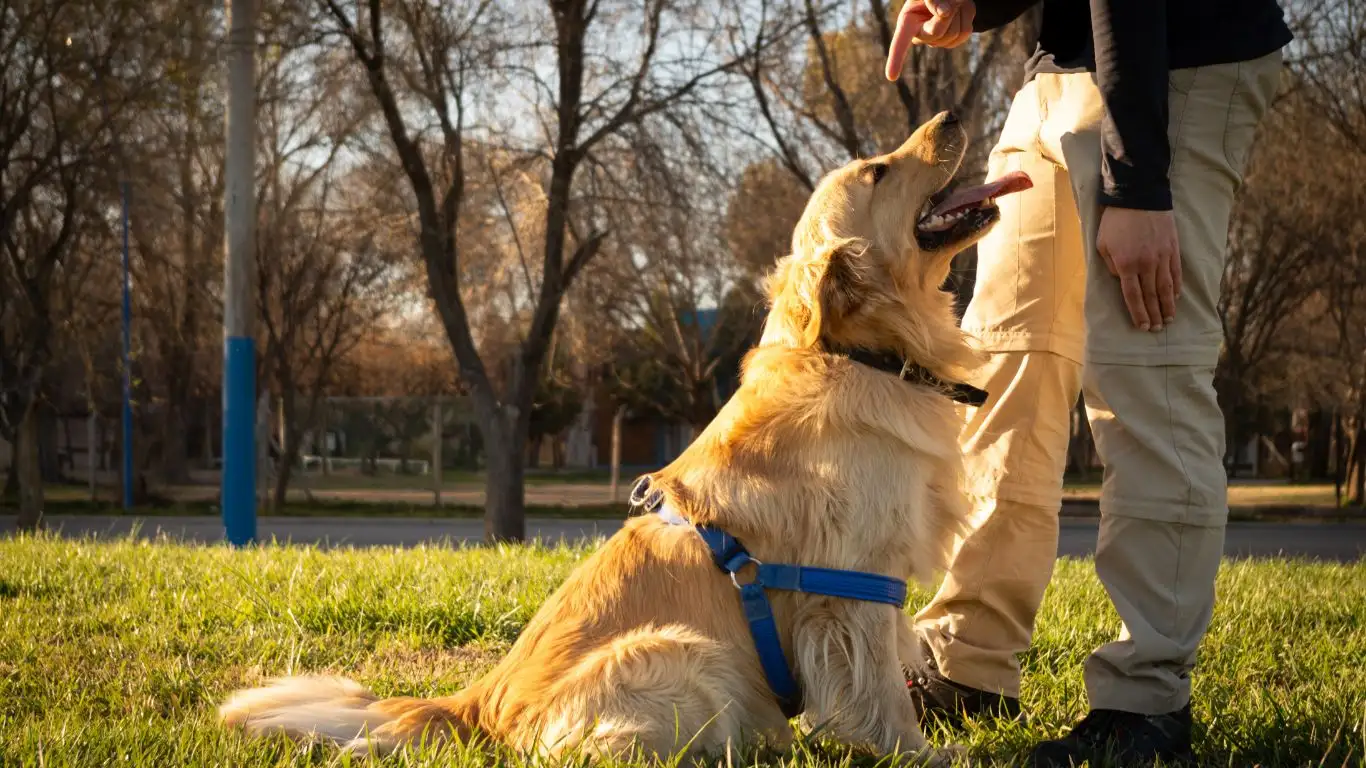The Best Protein-to-Fat Ratio for Dogs: Essential Guide to Perfect Nutrition
When it comes to feeding your dog, we all want the best for our furry friends, right? As an Animal Care Specialist with years of experience in pet clinics and shelters, I’ve seen firsthand how important proper nutrition is for dogs. Whether you’re a new dog parent or an experienced one, understanding the right balance of nutrients can sometimes feel like an overwhelming task. One of the most common questions I hear is: What’s the best protein-to-fat ratio for dogs? It’s an essential factor when choosing the right food that not only keeps your pup healthy but also energizes them for their daily adventures. But, what exactly does this ratio mean, and how do you figure out what works best for your dog? Well, let’s break it down together.
What Is Protein-to-Fat Ratio and Why Is It Important?
Let’s start with the basics. The protein-to-fat ratio in dog food simply refers to how much protein and fat is present in the diet relative to each other. These two macronutrients are crucial for your dog’s overall health, providing them with the energy they need and helping to build and maintain muscles, skin, and coat. But here’s the thing: not all dogs are created equal, so their protein-to-fat needs can vary depending on their age, breed, size, and activity level.

As a general rule of thumb, dogs need protein to support healthy muscles, organs, and tissues, while fat provides them with a concentrated source of energy. So, when considering the best protein-to-fat ratio for your dog, it’s about finding that sweet spot that will help them thrive. Too much protein and not enough fat might leave your dog with energy issues, while too much fat and not enough protein can lead to obesity and other health problems.
How Much Protein Should Dogs Have?
In general, protein is a must-have in your dog’s diet. It plays an essential role in tissue repair, muscle building, and overall cell function. Most adult dogs should have a protein intake of around 18-30% of their diet, though the specific percentage varies depending on their life stage, size, and health needs. Puppies, for instance, require more protein to support their rapid growth and development, while senior dogs may need less to avoid overburdening their kidneys.
From my personal experience working with a wide range of dogs, I’ve seen how important it is to find the right protein balance. Dogs who are highly active or working dogs, like herding or sporting breeds, may need more protein to keep up with their energy demands. For example, a working Border Collie will likely thrive on a food with a higher protein content compared to a more sedentary breed like a Bulldog.
What About Fat? How Much Is Too Much?
Fat, despite its bad reputation in human diets, is essential for your dog’s nutrition. Dogs require fat to help absorb fat-soluble vitamins (like A, D, E, and K), and it helps to keep their coat shiny and skin healthy. Fat also provides an energy source that’s more concentrated than carbohydrates, so it’s essential for dogs who are active or in need of weight maintenance.

Generally speaking, adult dogs should consume between 8-15% fat in their food, depending on their energy level and health status. Puppies, active dogs, and those needing to gain weight may need higher fat content. But like with protein, there’s a balance. Too much fat can lead to excess weight gain, which is something that many pet owners, unfortunately, overlook. Obesity in dogs is a rising issue, and controlling their fat intake can play a significant role in their long-term health.
Determining the Right Protein-to-Fat Ratio for Your Dog
Now that you have a basic understanding of the roles that protein and fat play in your dog’s diet, it’s time to figure out the right ratio for your specific dog. A good protein-to-fat ratio will depend on factors such as breed, size, age, and activity level. Let’s break it down:
Small Dogs vs. Large Dogs
Small dogs tend to have higher metabolism rates than larger breeds, meaning they burn calories faster. They may benefit from slightly higher protein content (around 25-30%) and moderate fat content (around 12-15%). Larger dogs, on the other hand, don’t require quite as much protein and may do well with a lower-fat diet (around 8-12%), especially if they’re prone to joint issues, as excessive weight can stress their bones and joints.
Active Dogs vs. Sedentary Dogs
Active dogs, such as working dogs or those involved in agility or hunting, will need more protein and fat in their diet to fuel their high energy expenditure. A protein-to-fat ratio of 30-40% protein and 18-25% fat can help keep their muscles fueled and maintain their stamina. For dogs that spend most of their time lounging around the house, a lower ratio might be more suitable.
Age Matters Too!
Puppies are growing fast, and they need higher protein and fat content to support that growth. They typically need a protein-to-fat ratio of about 30-40% protein and 15-20% fat, depending on the breed. Older dogs, especially those with health issues like kidney disease or joint problems, may benefit from a lower protein-to-fat ratio. However, it’s important to check with your vet to ensure you’re meeting their unique needs.

Understanding Dog Food Labels: What to Look For
Reading dog food labels can be a bit tricky, but it’s essential for ensuring your dog is getting the proper nutrition. When checking the ingredients list, look for named animal proteins like *chicken, beef, or lamb* as the first ingredient. These are high-quality protein sources that will provide your dog with the nutrients they need. Avoid foods that list vague protein sources like “meat meal” or “poultry by-products,” as they can be lower quality.
Fat content should also be clearly listed. Be wary of foods with high levels of fillers like corn or soy, as these aren’t nutritionally beneficial and can disrupt the protein-to-fat balance. Opt for dog foods that emphasize whole food ingredients, such as vegetables and fruits, which provide additional nutrients like fiber and antioxidants.
Ultimately, the best protein-to-fat ratio for your dog depends on their specific needs. Taking into account your dog’s breed, size, age, and activity level will guide you in selecting the perfect food for them. It’s always a good idea to consult your vet when making any major changes to your dog’s diet to ensure you’re supporting their health in the best possible way.
The Role of Carbohydrates in Your Dog’s Diet
Now, let’s talk about carbs. While protein and fat often take center stage in the conversation about dog nutrition, carbohydrates also play an important role in a balanced diet. When you think of carbs in your dog’s food, don’t just picture bread or pasta. Instead, think about fiber-rich ingredients like sweet potatoes, brown rice, and peas. These ingredients provide essential energy for your dog while also promoting digestive health.
As an Animal Care Specialist, I’ve seen a lot of confusion surrounding carbohydrates. Some people think that all carbs are bad for dogs, but that’s simply not true. Carbs provide your dog with the energy they need for daily activities, just like they do for humans. The key is to ensure that the carbs are coming from wholesome, easily digestible sources. Too many processed or low-quality carbs can cause blood sugar spikes, which isn’t ideal for your dog’s long-term health.

Why Fiber Matters
Fiber is a type of carbohydrate that’s particularly important for your dog’s digestive system. It helps keep things moving through their intestines, preventing constipation and promoting overall gut health. Fiber also helps your dog feel fuller for longer, which can be particularly helpful if you’re trying to manage their weight. In fact, fiber can sometimes be just as important as protein and fat when it comes to maintaining a healthy diet for your pup.
In my experience, dogs that consume a diet rich in fiber tend to have better digestive health and fewer stomach issues, especially those prone to sensitive stomachs. Ingredients like pumpkin, carrots, and beet pulp are great sources of fiber and can provide the necessary support for your dog’s digestive system.
Decoding Dog Food Labels: How to Find the Best Protein-to-Fat Ratio
Now that you understand the role of protein, fat, and carbs in your dog’s diet, let’s dig into the practical side of things—reading dog food labels. It can be tricky at first, but once you know what to look for, you’ll feel much more confident in choosing the best food for your pup.
First things first, always start by looking at the guaranteed analysis. This is typically found on the back of the bag or can and will give you the percentages of protein, fat, fiber, and moisture in the food. Keep in mind that the percentages are based on a dry matter basis (meaning that they account for the water content), so if you’re comparing dry food with wet food, you’ll need to adjust for that difference.
What to Look for in Protein Sources
When evaluating the protein in your dog’s food, quality matters more than quantity. Look for animal-based protein sources like chicken, beef, turkey, lamb, or fish. These proteins are more digestible and provide essential amino acids that your dog’s body needs to thrive. If you see terms like “meat meal” or “by-product meal,” these can be lower quality sources and might not provide the same nutritional benefits.
Another thing to note: some brands use plant-based proteins like peas or lentils, which can be a good supplement but shouldn’t be the primary source of protein. While plant-based proteins are fine in moderation, they’re often not as complete as animal proteins when it comes to providing all the amino acids your dog needs. So, when selecting a food, make sure the first ingredient is a named animal protein.

Fat Content: More Than Just Calories
When it comes to fat in dog food, it’s important to consider not just the percentage, but also the quality of the fats. Healthy fats like omega-3 and omega-6 fatty acids can promote healthy skin and coat, improve cognitive function, and even reduce inflammation. So, look for ingredients like fish oil, flaxseed, or chicken fat. These are high-quality fat sources that provide essential fatty acids your dog needs for optimal health.
Beware of foods with high levels of low-quality fats, like animal fat or by-product oils. These fats are often processed at high heat, which can destroy essential nutrients and cause the fat to become oxidized, potentially leading to inflammation or digestive issues.
The Best Protein-to-Fat Ratio for Your Dog’s Life Stage
As we touched on earlier, the ideal protein-to-fat ratio for your dog depends largely on their life stage, activity level, and overall health. Puppies, adults, and senior dogs all have different nutritional needs. Understanding these differences can help you choose the right food for your dog at every stage of life.
Puppies: High Protein, Moderate Fat
Puppies are growing rapidly, which means they need more protein to build muscles and tissues. A good protein-to-fat ratio for puppies is typically 30-40% protein and 15-20% fat. It’s essential for their development and energy needs. I’ve worked with many clients who’ve brought in their pups for regular checkups, and one thing that always stands out is how much a high-protein, moderate-fat diet helps them grow healthy and strong.
However, it’s also important to note that not all puppies are the same. Larger breeds, like Great Danes or St. Bernards, have different growth patterns compared to smaller breeds like Chihuahuas or Dachshunds. Larger breed puppies require a more controlled protein-to-fat ratio to prevent them from growing too quickly, which can lead to joint problems.
Adult Dogs: Balanced for Maintenance
For adult dogs, a protein-to-fat ratio of 20-30% protein and 8-15% fat is usually ideal. This balance provides enough protein to maintain muscle mass and enough fat for energy without tipping into the unhealthy weight gain zone. In my experience, most adult dogs, whether they’re working or lounging around the house, do best on this balanced approach. However, always be mindful of your dog’s activity level—more active dogs might need a bit more fat in their diet.

Senior Dogs: Lower Protein, Higher Quality Fat
Senior dogs have different nutritional needs, and their protein-to-fat ratio should reflect that. As dogs age, their metabolism tends to slow down, and they often have lower energy requirements. Senior dogs may benefit from a lower protein intake (around 18-25%) to reduce stress on their kidneys. Fat content should be moderate (around 10-15%) to maintain their weight and energy levels without contributing to obesity.
In addition to adjusting the protein-to-fat ratio, senior dog foods often contain added joint supplements like glucosamine and chondroitin, as well as higher levels of antioxidants to support their immune system. As someone who’s spent years working with senior dogs in shelters, I can’t stress enough how important it is to keep an eye on their weight and adjust their diet as needed.
How to Adjust Your Dog’s Diet Over Time
Feeding your dog isn’t a one-and-done situation. As they grow, age, or even change their activity levels, their dietary needs will evolve, too. As a pet care professional, I’ve seen many owners who start with a specific food but forget to adjust it over time, leading to potential health issues down the road. Whether your dog is transitioning from puppyhood to adulthood or moving into their senior years, it’s important to reassess their protein-to-fat ratio regularly. So how do you know when it’s time to make changes?
Transitioning from Puppyhood to Adulthood
As your puppy matures, their body shifts from growth mode to maintenance mode. At this stage, the high-protein, high-fat diet they needed as a puppy may no longer be necessary. Transitioning to an adult formula that provides a more balanced protein-to-fat ratio will help ensure they maintain lean muscle mass without gaining excess weight.
In my experience, I recommend gradually switching your puppy’s food around the 12-month mark (though larger breeds may take longer). This helps avoid any digestive upset. Mixing the new adult food with the puppy food over the course of 7-10 days can make the transition smoother, giving your dog’s digestive system time to adjust. If you’re unsure, you can always ask your vet to help with recommendations for the best adult food for your dog’s breed and size.

Adjusting for Weight Gain or Loss
Sometimes, you’ll find that your dog isn’t quite at the right weight, despite feeding them what seems like the right amount of food. If your dog is gaining weight, it could mean that they’re getting too many calories from fat or protein. On the flip side, if they’re losing weight, they might need more protein and fat for energy. It’s important to keep an eye on your dog’s body condition and adjust their food accordingly.
I’ve worked with clients whose dogs gained a little extra weight during the winter months when they were less active. For these pups, switching to a lower-fat food helped trim down those extra pounds. On the other hand, some very active dogs might need more fat to keep up with their energy needs. Adjusting your dog’s diet based on their activity levels and weight is an ongoing process that requires observation and sometimes consultation with your vet.
Common Pitfalls to Avoid
While we’re all focused on providing the best nutrition for our dogs, it’s easy to fall into some common traps that could lead to an imbalanced diet. Here are a few pitfalls I’ve noticed over the years, along with some tips on how to avoid them:
Overfeeding or Underfeeding
One of the most common mistakes I see as an animal care specialist is overfeeding or underfeeding. It’s easy to assume that your dog should eat the same amount of food every day, but their needs can fluctuate. If your dog is gaining weight, it could be because you’re feeding them too much, even if the food’s protein-to-fat ratio is ideal. On the other hand, if they’re losing weight or seem lethargic, you might not be feeding them enough.
A good rule of thumb is to regularly monitor their body condition score (BCS). Many vets use a 1-9 scale to assess a dog’s weight, with 1 being too thin and 9 being obese. The ideal BCS for a dog is usually between 4-5. If your dog’s BCS is too high or low, consider adjusting their food portions or choosing a different formula with a more suitable protein-to-fat ratio. Always consult your vet before making drastic changes to your dog’s food intake.
Relying Too Much on Treats
Let’s be honest—treats are a big part of our bond with our dogs. We love to see their happy faces when we give them a treat, and sometimes it feels like we’re doing them a favor by giving them just one more. However, too many treats can lead to an imbalanced diet, especially when you’re not factoring them into your dog’s overall caloric intake.
Some dog treats, especially those made with low-quality ingredients, can throw off the protein-to-fat balance in your dog’s diet. I’ve seen plenty of dogs come into the clinic with weight problems due to excessive treats. It’s important to ensure that treats are accounted for in your dog’s daily calorie count, and it’s always best to choose healthy, low-calorie treats that won’t derail their nutrition plan.

Consulting with Your Veterinarian
No matter how much research you do on your own, your vet remains the most reliable resource when it comes to your dog’s diet. As an Animal Care Specialist, I always recommend discussing your dog’s dietary needs with your vet before making major changes. Your vet can help you evaluate whether your dog is at a healthy weight, if their current food is working for them, and if there are any underlying health issues affecting their nutrition.
If your dog has a specific health condition, like kidney disease, pancreatitis, or food allergies, your vet can recommend specialized diets that are more suited to your dog’s needs. And if your dog is particularly picky or has digestive sensitivities, your vet can help guide you toward the best options based on your dog’s protein-to-fat ratio needs.
Keeping Track of Your Dog’s Health
As your dog gets older or their lifestyle changes, keeping track of their health becomes even more important. Maintaining regular vet checkups will allow you to make any necessary adjustments to their diet and ensure they’re getting the best nutrition possible. You’ll also want to monitor their energy levels, coat condition, and overall behavior. If you notice any changes, it might be time to reassess their protein-to-fat ratio or switch to a different food.
References
For more detailed information on dog nutrition and the best protein-to-fat ratios, be sure to check out resources like the American Kennel Club and consult your veterinarian for tailored advice specific to your dog’s breed and health condition.
Disclaimer
This article is meant to provide general information and guidance regarding dog nutrition and should not be considered a substitute for professional veterinary advice. Always consult your veterinarian before making any changes to your dog’s diet or introducing new foods. Every dog has unique nutritional needs that must be carefully considered based on their health status, age, breed, and activity level.






